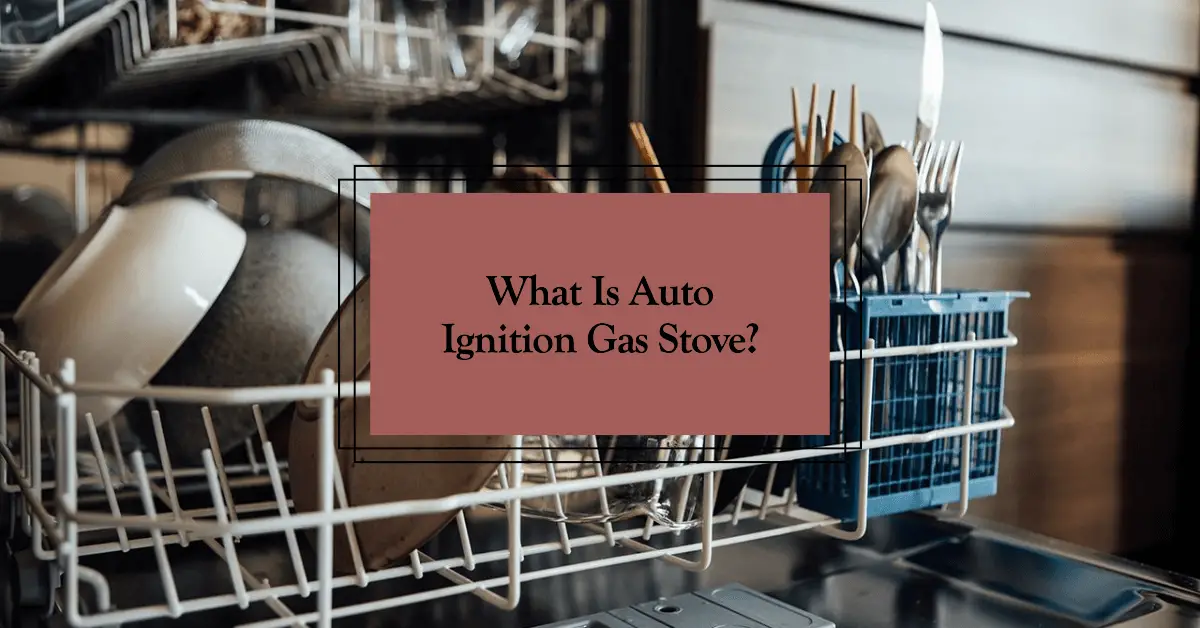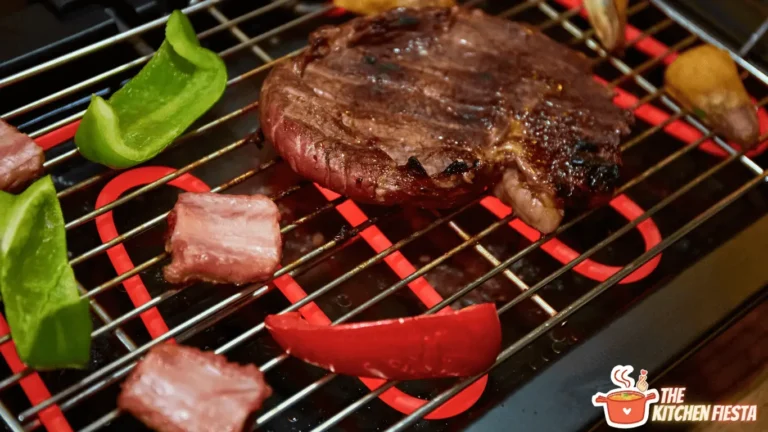What is Auto Ignition in Gas Stoves? A Complete Guide

Have you ever wondered how your gas stove is able to light itself instantly with the simple turn of a knob? If so, the answer is auto ignition technology.
Auto ignition is a convenient feature found in most modern gas stoves that allows each burner to light automatically using electricity. This eliminates the need for manually lighting burners with matches or lighters.
In this comprehensive guide, we’ll explain everything you need to know about auto ignition in gas stoves including:
- How the auto ignition mechanism works
- The pros and cons of auto ignition stoves
- Troubleshooting common auto ignition problems
- Comparing auto ignition vs standard manual ignition
After reading, you’ll understand exactly what auto ignition is, how it functions, and whether a stove with auto ignition is right for your kitchen.
How Does Auto Ignition Work in Gas Stoves?
The auto ignition system allows each gas burner to be lit electronically using a piezoelectric igniter.
Piezoelectricity is an interesting scientific phenomenon where certain crystals generate a voltage when mechanical pressure is applied. In your stove, these crystals are used to create the spark for lighting the burner.
Here is an overview of the auto ignition process:
- Inside each burner is a small igniter made from piezoelectric crystals. This is connected by a wire to an electrode tip placed near the gas outlet.
- When you turn the control knob to release gas, it also compresses the piezoelectric igniter.
- This compression generates voltage that travels through the wire to the electrode tip.
- When the voltage reaches the electrode, it creates a spark between the electrode tip and burner.
- This small electric spark instantly ignites the gas as it flows out of the burner.
- Within a fraction of a second, the burner lights and your stove is ready to cook!
Essentially, the compression of the piezoelectric crystals provides the initial electric spark to light the stove. Once the gas is ignited, the flames are sustained until you turn the knob to stop the flow of gas.
This makes auto ignition stoves much more convenient than needing an external flame source like a match or lighter. The electric spark does all the work for you!
The Auto Ignition Mechanism In Detail
Now that you have a general idea of how auto ignition works, let’s look at the specific components and mechanics involved in more detail.
Piezoelectric Igniters
The key component that makes auto ignition possible is the piezoelectric igniter. Each burner has its own igniter that generates the voltage for the spark.
These igniters are made from specialized piezoelectric crystals, usually zinc oxide or quartz, encased in a ceramic housing.
Applying mechanical force to the crystals causes voltage generation across the crystal faces. This is known as the piezoelectric effect.
Turning the control knob applies force to compress the crystals. This compression causes voltage to be created.
The most common type of igniter used is a spring-loaded hammer igniter. A spring applies force to the piezoelectric element when the knob is turned.
Other types of igniters work similarly using different means to compress the crystals and create the electric spark.
Electrode Tips
The voltage created by the igniter travels through a wire to the electrode tip located next to the stove burner.
This tip is made from ceramic or metal and placed within 1-3mm of the burner outlet where gas flows.
When the high voltage reaches the electrode, it arcs across the small gap to the burner, creating a spark.
This spark provides the heat source to ignite the gas coming from the burner outlet.
The Ignition Process
Here is a recap of what happens during the auto ignition process when you turn on a gas burner:
- Turn knob to start gas flowing out of the burner.
- Knob action compresses the piezoelectric igniter, generating voltage.
- Voltage travels through wire to the electrode tip by the burner.
- Electric arc spark forms between electrode and burner outlet.
- Spark ignites the gas flowing from the burner.
- Flame sustains itself as gas continues flowing.
- Turn knob to stop gas flow and extinguish flame when done cooking.
The entire ignition process is extremely fast, allowing the burner to ignite within a fraction of a second. The crystals, electrodes, and wires are all designed to create a spark the instant gas starts flowing.
This speed and convenience is the major advantage of auto ignition compared to manually lighting burners.
Pros of Auto Ignition Gas Stoves
There are several excellent benefits to auto ignition that make it a highly desirable feature in gas stoves:
1. Convenience
The main advantage is convenience. Auto ignition allows you to turn on any burner instantly without needing matches, lighters, or any other external flame.
The gas lights itself the moment you turn the knob, saving you the effort of manually lighting each burner. This makes cooking much easier and quicker.
2. Time Savings
You don’t have to spend time locating matches or a lighter before using the stove. And you don’t have to manually light each individual burner.
Those few seconds to ignite burners manually can add up to significant time savings if you use your stove frequently.
3. No Wasted Fuel from Pilot Lights
Older gas stoves use a pilot light that burns continuously 24/7 to provide the ignition source. Keeping these pilot lights lit wastes gas.
Auto ignition only uses the small amount of gas required to sustain the flame while actually cooking. No gas is wasted just for ignition purposes.
4. Safety
Stoves without auto ignition often have an open pilot light flame. This can be a safety issue around small children or pets who may accidentally touch the flame.
Auto ignition only creates a flame when you turn on the burner. There is no continuously burning pilot. This offers added safety for families.
5. Reliable Ignition
Manual ignition using matches or lighters doesn’t always work on the first try. You may need to strike multiple times to get the burner lit.
With auto ignition, you get reliable flame ignition every time you turn the knob. There’s no more swearing under your breath when the burner won’t light.
Cons of Auto Ignition Gas Stoves
While auto ignition provides excellent convenience for the user, there are some downsides to consider:
1. More Expensive
The main drawback of auto ignition stoves is the higher cost. Auto ignition requires additional mechanical and electrical components like igniters, wires, and electrodes.
This increases manufacturing costs compared to a basic manual ignition stove. So auto ignition stoves almost always have a higher purchase price.
2. Repair and Replacement
With more complex components, auto ignition systems can fail over time and need repair. For example, electrodes may corrode or wires can come loose.
Replacing failed igniters or other components also adds to long term appliance ownership costs.
3. Multiple Tries May be Needed
Most of the time, auto ignition works immediately when you turn the knob. But occasionally, you may need to rotate back and forth a few times before the spark ignites.
The ignition can fail to produce a spark on the first try if grease or dust builds up on the electrode tip. Not a huge hassle, but loss of convenience.
4. Potential Ignition Failure
Rarely, the auto ignition may stop working entirely due to a dead igniter or loose wiring. This means no flame until you get the components fixed.
In contrast, pilot light stoves often keep working even if the pilot goes out until repairs can be made.
While not common, the potential for an ignition failure is present with auto ignition.
Troubleshooting Auto Ignition Problems
If your auto ignition stove is failing to light, there are several troubleshooting steps you can take:
- Check gas flow – First ensure gas is actually flowing from the burner when you turn the knob. If no gas release, there may be blockage in the supply line.
- Inspect electrode tip – Remove the burner caps and visually inspect that the electrode tips are clean and correctly positioned near the outlet.
- Check electrical connections – Use a multimeter to check that voltage is reaching the electrode tip when the igniter compresses. Verify all wires are intact.
- Clean electrode tip – Use rubbing alcohol on a cotton swab to gently clean any grease or dust on the electrode tip which could interrupt sparking.
- Replace igniter – If voltage is present but no spark, the igniter itself likely needs replacement. An igniter only works properly for so many cycles before needing replacement.
- DIY or call for service – Basic cleaning of electrodes and electrical checks can be DIY. If igniter replacement is needed, contact the manufacturer or local appliance repair service.
Following this troubleshooting sequence can help narrow down what component is malfunctioning to get your auto ignition working again.
Auto Ignition vs Manual Ignition Stoves
If considering a new gas stove purchase, you’ll need to decide between auto ignition or traditional manual ignition. Here’s how they compare:
- Convenience – Auto ignition offers vastly more convenience by eliminating the need for matches and lighters to ignite burners. Turn and ignite within seconds.
- Reliability – When working properly, auto ignition provides reliable flame on the first try. Manual ignition may take multiple attempts if windy.
- Safety – Auto ignition is safer with no open pilot light. But manual ignition pilots provide ignition source when auto ignition fails.
- Fuel use – Auto ignition uses less wasted gas overall since there is no continuously burning pilot.
- Upfront cost – Auto ignition stoves tend to have a higher purchase price due to more complex components.
- Ongoing cost – Manual ignition has almost no ongoing costs. Auto ignition requires occasional igniter replacement or repairs.
- Simplicity – Manual ignition has less things that can break. Auto ignition’s complexity does mean more potential maintenance.
- For forgetful cooks – Those who have a habit of leaving the stove on may favor auto ignition for the added safety benefits.
In summary, for most homeowners, the convenience factor of auto ignition outweighs the higher price and maintenance requirements. But manual ignition stoves may make sense for budget buyers focused purely on upfront cost.
Conclusion
Hopefully this guide gave you a helpful overview explaining what auto ignition is and how it allows gas stoves to light themselves.
The key takeaways about auto ignition are:
- It uses piezoelectric crystals to create an electric spark when the knob is turned.
- This spark instantly ignites the gas flowing from the burner outlet.
- Auto ignition provides great convenience but costs more upfront than manual ignition.
- Occasional repairs may be needed if the igniter or electrodes stop working properly.
- Overall auto ignition makes gas stoves easier and quicker to use for most people.
If you’re shopping for a new range, deciding between auto vs manual ignition depends on your priorities. But for ease of use, most homeowners prefer the convenience of auto ignition stoves.
Now that you understand the technology behind this helpful kitchen innovation, you can knowledgeably shop for your perfect new gas range!






